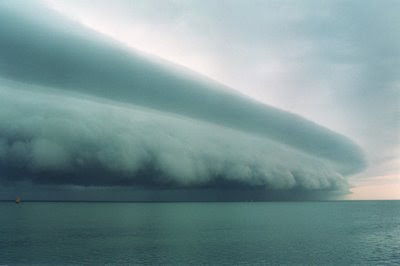
A Jack Russell puppy was the first to sense the danger. With ears pinned back, it cowered in the corner, whimpering, trembling. Hail the size of golf balls started smashing against the windows, and then came rain, torrential, relentless, deafening. Women and children were crying and men with tattoos on their tree-trunk biceps looked anxiously about them. Thunder shook the building and rattled our souls. A lightening strike momentarily turned everything a shocking blue before plunging us into darkness.
Suddenly, a siren sounded outside. "Tornado warning!" shrieked a voice from the darkness. "OK, people, listen up!" shouted another voice behind a flickering torch beam. "Everybody, into the walk-in refrigerator. Now!"
It was May, 2008 and I was in a petrol station in Nebraska after seven weeks travelling the American Midwest pursuing tornadoes during the most active tornado season for 50 years. Already 90 people had died, but the season was far from over. As an anthropologist and geographer, I am fascinated by the complex relationship between man and nature, and wanted to get up close and personal with a twister.
Why, I wanted to know, do people insist on living in climatic danger zones? Why do they choose to coexist with natural hazards that could kill or injure them on a seasonal basis? And, as a filmmaker and adventurer, I also wanted the adrenalin buzz of rubbing shoulders with this ferocity – and capturing it on film.
(This is a terrific article, with video highlights. Click here to read the entire post).









